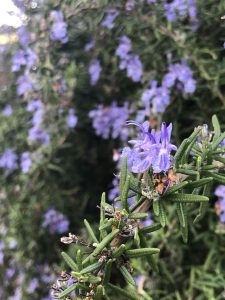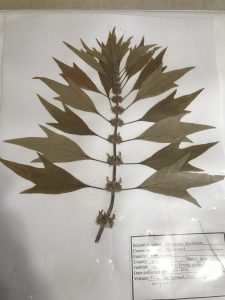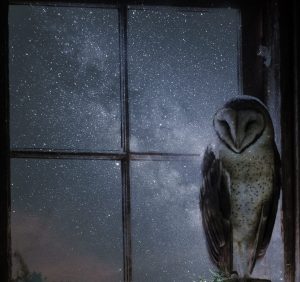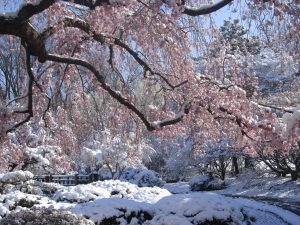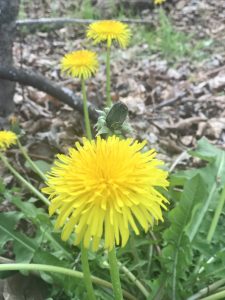 Spring. What better way to awaken then immersing myself in green: plants, flowers, trees, fungi. My friends Marty, Janie and I joined Karen Sherwood of Earthwalk Northwest for a Wild Food Foraging Spring Celebration. A day: in the weeds, the kitchen, the dining room. We met in the Earthwalk classroom where Karen introduced ethical principles and of wild food foraging guidelines. She explained how plants and medicine go hand in hand. Bringing wild foods onto our plates is a way to reconnect with the earth. Our food sources are becoming compromised and depleted. They lack the micronutrients we need to truly flourish. In Bread, Wine Chocolate, author Simran Sethi, describes the last century’s dramatic shifts we’ve experienced in food and agriculture. Foods are beginning to look and taste the same. Ninety-five presence of the world’s calories are now coming from only 30 species. Our foods are primarily made up of corn, wheat, rice, palm oil and soybeans. We are losing the delicious, diverse variety of food. Karen encouraged us to learn to incorporate wild foods in our diet every day. In learning about one new plant friend a week we develop a relationship with the life forms that sustain us. Continue reading
Spring. What better way to awaken then immersing myself in green: plants, flowers, trees, fungi. My friends Marty, Janie and I joined Karen Sherwood of Earthwalk Northwest for a Wild Food Foraging Spring Celebration. A day: in the weeds, the kitchen, the dining room. We met in the Earthwalk classroom where Karen introduced ethical principles and of wild food foraging guidelines. She explained how plants and medicine go hand in hand. Bringing wild foods onto our plates is a way to reconnect with the earth. Our food sources are becoming compromised and depleted. They lack the micronutrients we need to truly flourish. In Bread, Wine Chocolate, author Simran Sethi, describes the last century’s dramatic shifts we’ve experienced in food and agriculture. Foods are beginning to look and taste the same. Ninety-five presence of the world’s calories are now coming from only 30 species. Our foods are primarily made up of corn, wheat, rice, palm oil and soybeans. We are losing the delicious, diverse variety of food. Karen encouraged us to learn to incorporate wild foods in our diet every day. In learning about one new plant friend a week we develop a relationship with the life forms that sustain us. Continue reading
Category Archives: Sharing
Seattle Urban Foraging Scavenger Hunt!
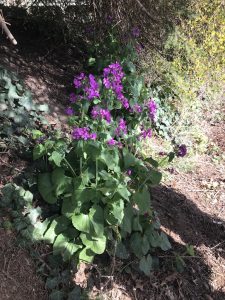 Last Saturday JT, Ethnobotany Guide Extraordinaire, lead us, ethnobots, on a foraging walkabout around the Seattle Jackson Place, Judkins Park and International District. She made it fun by challenging us to a scavenger hunt. She interwove plant observations along with the multi-cultural stories of the people who made their homes here. This was a powerful learning about place: Seattle is home to many cultures; it has a history of discrimination and displacement. Sort of like the plants that end up here – they are blown in from the wind or carried by birds. Some of those winds are the harsh forces of conflict in home countries. Immigrants and refugees take root and are then uprooted again by powerful economic and social forces.
Last Saturday JT, Ethnobotany Guide Extraordinaire, lead us, ethnobots, on a foraging walkabout around the Seattle Jackson Place, Judkins Park and International District. She made it fun by challenging us to a scavenger hunt. She interwove plant observations along with the multi-cultural stories of the people who made their homes here. This was a powerful learning about place: Seattle is home to many cultures; it has a history of discrimination and displacement. Sort of like the plants that end up here – they are blown in from the wind or carried by birds. Some of those winds are the harsh forces of conflict in home countries. Immigrants and refugees take root and are then uprooted again by powerful economic and social forces.
Plants and people grow toward light. We all want to flourish and enjoy the fruits of our labors. These fruits can be seen in the Central District neighborhood homes, churches and temples, community centers, gardens and parks. Native and ornamental plantings were everywhere – adorning yards and also breaking through the cracks in the sidewalks. We began our walkabout in JT’s neighborhood, once predominantly Italian American. We hunted herbs for the heart, liver and mind.
Hawthorn is a tree in the rose family that grows all over the Northern Hemisphere. Its high favonoid content has been shown to decrease inflammation and oxidative stress. Hawthorn has helped to reduce heart problems including high blood pressure and improve heart function. 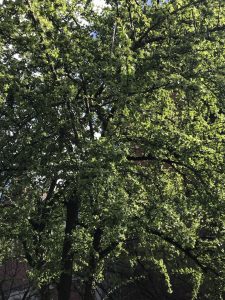 Fall berries can be made into honeys and jams. “Hearty” Hawthorn seems at home in the city. I discovered it just a few years ago when coming upon some Russian emigres picking red berries on the Snoqualmie River. They explained that the berries were “very strong heart medicine.”
Fall berries can be made into honeys and jams. “Hearty” Hawthorn seems at home in the city. I discovered it just a few years ago when coming upon some Russian emigres picking red berries on the Snoqualmie River. They explained that the berries were “very strong heart medicine.”
Dandelions have long been used by herbalists to support liver health. Roots can be boiled to make a decoction or dried and roasted to make a fine tea. Flowers and leaves are edible. 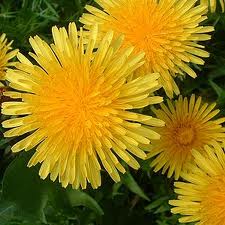 I’ve experimented with greens in salads, pestos and soups. Last week we enjoyed dandelion blossom shortbread cookies. Gather the blossoms in the sun and it will bring happiness.
I’ve experimented with greens in salads, pestos and soups. Last week we enjoyed dandelion blossom shortbread cookies. Gather the blossoms in the sun and it will bring happiness.
Rosemary is a member of the mint family which includes many other herbs, such as oregano, thyme, basil, and lavender. Rosemary is rich in anti-oxidants and anti-inflammatory compounds, which are thought to help boost the immune system and improve blood circulation. 
Scientists have found that rosemary may also be good for your brain. Rosemary contains an ingredient called carnosic acid, which can fight off damage by free radicals in the brain. Some studies have suggested that rosemary may significantly help prevent brain aging. Research continues on rosemary’s possible uses in treating Alzheimers.
Dandelion Heaven
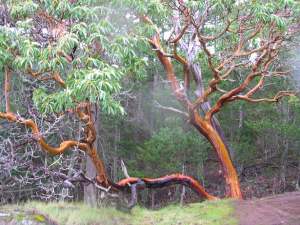 This Wednesday, we had our tenth Ethnobotany Apprenticeship class with Earthwalk Northwest. JT introduced today’s mystery plant: Pacific Madrona. She made a tea infusion with bark, leaves and flowers. JT brought leaves, bark and blossoms and a beautiful wooden bowl. The tea was mild and astringent, the blossoms sweet. Medicinally, the bark tea can be used for colds and stomach issues. Its hard wood was used by native people for gambling sticks, bowls and necklaces. Pacific Madrona, Arbutus menziesii, is part of the Heath, Ericaceae, family. The tree grows from Vancouver Island, south through the Cascade lowlands all the way down to San Diego County. Madrone berries are prized as by birds, rodents, deer, and wood rats.
This Wednesday, we had our tenth Ethnobotany Apprenticeship class with Earthwalk Northwest. JT introduced today’s mystery plant: Pacific Madrona. She made a tea infusion with bark, leaves and flowers. JT brought leaves, bark and blossoms and a beautiful wooden bowl. The tea was mild and astringent, the blossoms sweet. Medicinally, the bark tea can be used for colds and stomach issues. Its hard wood was used by native people for gambling sticks, bowls and necklaces. Pacific Madrona, Arbutus menziesii, is part of the Heath, Ericaceae, family. The tree grows from Vancouver Island, south through the Cascade lowlands all the way down to San Diego County. Madrone berries are prized as by birds, rodents, deer, and wood rats. 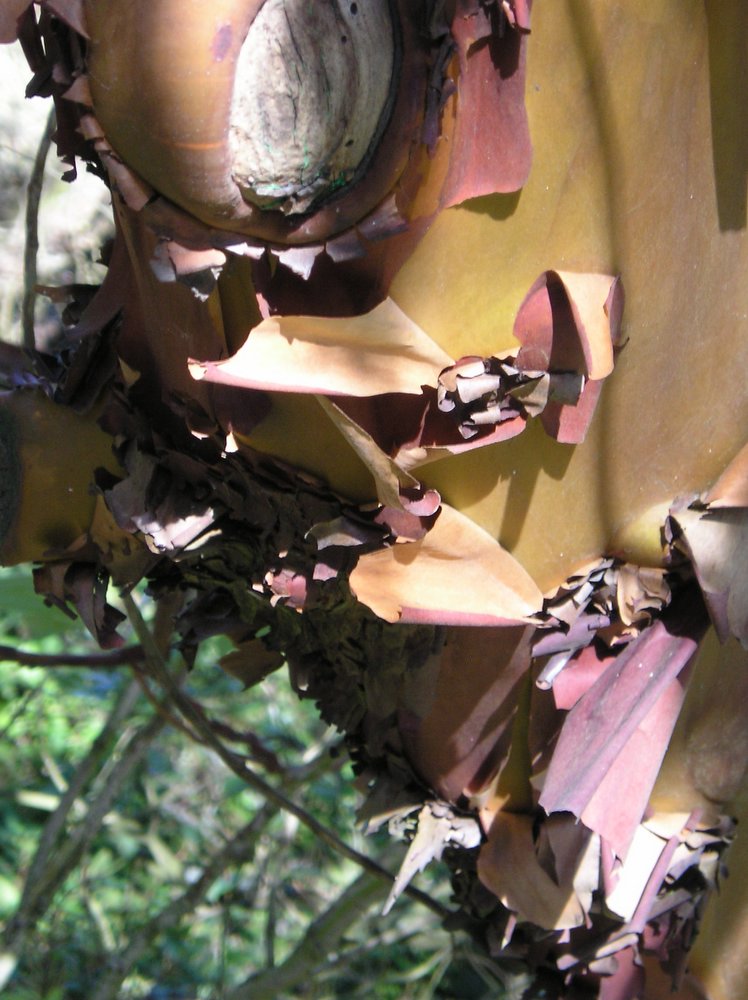 At least five species of birds, especially the mourning dove and band-tailed pigeon, devour berries and then disseminate the seeds. According to the U.S. Forest Service, “. . . the longevity of madrone is not known, the species has been referred to as “giving evidence of being long lived.” Trees 200 to 250 years old have been recorded and large specimens are estimated to be 400 to 500 years old.” I remember seeing its beautiful rusty skin peeling down its smooth slender trunk along the Marin County coastal bluffs and in the lowland areas around Yosemite National Park. Continue reading
At least five species of birds, especially the mourning dove and band-tailed pigeon, devour berries and then disseminate the seeds. According to the U.S. Forest Service, “. . . the longevity of madrone is not known, the species has been referred to as “giving evidence of being long lived.” Trees 200 to 250 years old have been recorded and large specimens are estimated to be 400 to 500 years old.” I remember seeing its beautiful rusty skin peeling down its smooth slender trunk along the Marin County coastal bluffs and in the lowland areas around Yosemite National Park. Continue reading
Adventures in Ethnobotany
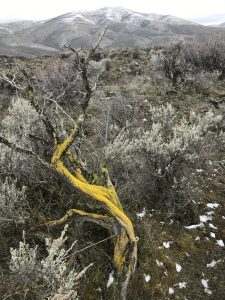 This Wednesday I started my six month Ethnobotany Apprenticeship with Earthwalk Northwest. I’ve been anticipating this adventure for months – delving into some of the required texts: Thomas Elpel’s Botany in a Day, Plants of the Pacific Northwest Coast, by Jim Pojar and Andy MacKinnon and Medicinal Plants of the Pacific Northwest by Michael Moore. I carried them on our trips to the Yakima River Canyon to help identify plants. I identified this beautiful Sagebrush as Artemesia, part of the Aster Subfamily, Chamomile Tribe, Anthemideae. And so I am welcomed to the world of botanical taxonomy. Botany in a Day (BIAD) is a great introduction to the “patterns method of plant identification.” Washington Native Plant Society is another wonderful resource that includes The Starflower Foundation educational resources and Image Herbarium. This site has been a treasure to me as a newbie. It offers great ideas for introducing kids to the natural world from grades K to middle school.
This Wednesday I started my six month Ethnobotany Apprenticeship with Earthwalk Northwest. I’ve been anticipating this adventure for months – delving into some of the required texts: Thomas Elpel’s Botany in a Day, Plants of the Pacific Northwest Coast, by Jim Pojar and Andy MacKinnon and Medicinal Plants of the Pacific Northwest by Michael Moore. I carried them on our trips to the Yakima River Canyon to help identify plants. I identified this beautiful Sagebrush as Artemesia, part of the Aster Subfamily, Chamomile Tribe, Anthemideae. And so I am welcomed to the world of botanical taxonomy. Botany in a Day (BIAD) is a great introduction to the “patterns method of plant identification.” Washington Native Plant Society is another wonderful resource that includes The Starflower Foundation educational resources and Image Herbarium. This site has been a treasure to me as a newbie. It offers great ideas for introducing kids to the natural world from grades K to middle school.
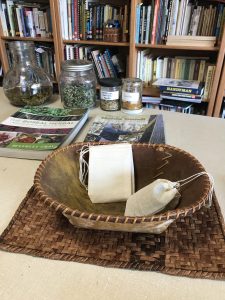 My first day in class with instructor Karen Sherwood was a joy. I met our class teaching assistant, JT and fellow class mates Janie and Jen. Karen gave us an overview of the journey, describing our weekly activities and foraging trips.
My first day in class with instructor Karen Sherwood was a joy. I met our class teaching assistant, JT and fellow class mates Janie and Jen. Karen gave us an overview of the journey, describing our weekly activities and foraging trips.
She outlined gathering guidelines which are based on common sense, gratitude and reciprocity. We created an offering bag of sweetgrass, sage and cedar to be given in thanks for the plant material we take for our studies.
Karen explained that we will be creating our own plant press and herbarium. The plant press will be portable and easily used in the field. Here is the cover of JT’s herbarium – a mammoth collection of native plants, pressed and fixed onto pages documenting habitat, ecology and virtues – truly a labor of love.
We will also be developing a relationship with a particular plant ally for the length of the course.Our Plant Ally Project will be a deep study of the plant, drawing it with leaf, flower, fruit and seed. Research will cover its scientific characteristics as well as traditional and current uses. We will explore these uses and then present our findings at the end of the program. I know my friend already: Populis balsamifera, Black Cottonwood. It grows in my backyard along the Raging River and throughout the Snoqualmie Valley. It’s unmistakable scent is often on my body by way of massage oils and salves.
Karen and Frank, Earthwalk cofounder and instructor, hosted a beautiful Wildfoods Feast for us. The dishes included the wild foods that Karen and Frank had gathered over the past months on land and sea. Here is our memorable menu:
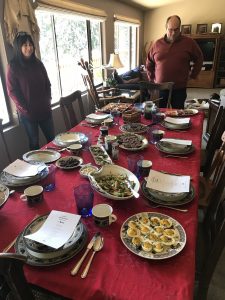 Bullwhip Kelp Pickles
Bullwhip Kelp Pickles
Alder Smoked Cheese
Poached Sicilian Sea Bass dressed on Nereocystis & Sargassum Seaweeds
Indian Popcorn made from local wild seaweed
Nettled Eggs
Land and Sea-weed Salad
Chantrelle and Morrell Mushroom Barley Soup, accented with Stinging Nettle
Acorn Flour Cakes
Elderberry Jelly
Rosemary Shortbread Cookies
Chocolate Nori Cake with Elder-Plum Glaze
Let the feast begin!
When Death Comes
Mary Oliver – earth inhabitant, particular and real, ever curious, left so quietly . . .
When death comes
like the hungry bear in autumn;
when death comes and takes all the bright coins from his purse
to buy me, and snaps the purse shut;
when death comes
like the measle-pox
when death comes
like an iceberg between the shoulder blades,
I want to step through the door full of curiosity, wondering:
what is it going to be like, that cottage of darkness?
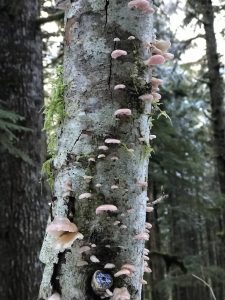 And therefore I look upon everything
And therefore I look upon everything
as a brotherhood and a sisterhood,
and I look upon time as no more than an idea,
and I consider eternity as another possibility,
and I think of each life as a flower, as common
as a field daisy, and as singular,
and each name a comfortable music in the mouth,
tending, as all music does, toward silence,
and each body a lion of courage, and something
precious to the earth.
When it’s over, I want to say all my life
I was a bride married to amazement.
I was the bridegroom, taking the world into my arms.
When it’s over, I don’t want to wonder
if I have made of my life something particular, and real.
I don’t want to find myself sighing and frightened,
or full of argument.
I don’t want to end up simply having visited this world.
~~~~~~~ Mary Oliver
Perfect Trust
 The Great Way runs
The Great Way runs
to left, to right,
the ten thousand things
depending on it,
living on it,
accepted by it.
Doing its work,
it goes unnamed.
Clothing and feeding
the ten thousand things,
it lays no claim on them
and asks nothing of them.
Call it a small matter.
The ten thousand things
return to it,
though it lays no claim on them.
Call it great.
So the wise soul
without great doings.
achieves greatness.
Lao Tzu’s Tao Te Ching
translated by Ursula K. Le Guin
Last Fragment
Cherry Blossoming Snow
Little Altars Everywhere
 A few weeks ago Tim and I went to visit our friends Chris and Cathy’s home and school at Wild Gardens. You can take a digital visit through their SoulArtSystem website. It’s a place where they nurture family, friends, plants, animals and earth. Magical green things seemed to sprawl in every direction. I couldn’t take it in fast enough – in fact my mind was moving too fast that day – with jittery agitation and busyness. I could feel a sense of avaricious, grabby energy around “taking in” something new.
A few weeks ago Tim and I went to visit our friends Chris and Cathy’s home and school at Wild Gardens. You can take a digital visit through their SoulArtSystem website. It’s a place where they nurture family, friends, plants, animals and earth. Magical green things seemed to sprawl in every direction. I couldn’t take it in fast enough – in fact my mind was moving too fast that day – with jittery agitation and busyness. I could feel a sense of avaricious, grabby energy around “taking in” something new.
Cathy offered us a breath centered yoga class in the sunlit studio overlooking a verdant tree-scape and unruly garden plots. I found myself trusting her guidance and then coming home to the place underlies surface turbulence. She suggested we simply say yes to our experience – even if it was yes to saying no – which made me smile. I started feeling my body’s yes to the areas of spine and pelvis Cathy traveled with words. Relaxing, breathing, trusting.
When we emerged from the studio, I could savor my friends, the sights, sounds and smells more slowly. Cathy gave us a tour of the land, art and living spaces. She generously invited us into her family’s special way of living. Together they grow grasses, herbs, trees, vegetables, raise farm animals, craft foods, drinks, willow reed baskets, build, paint and mosaic. Expressions of their creativity surrounded us.
Wind Singing Trees
A Ritual to Read to Each Other
If you don’t know the kind of person I am
and I don’t know the kind of person you are
a pattern that others made may prevail in the world
and following the wrong god home we may miss our star.For there is many a small betrayal in the mind,
a shrug that lets the fragile sequence break
sending with shouts the horrible errors of childhood
storming out to play through the broken dyke.And as elephants parade holding each elephant’s tail,
but if one wanders the circus won’t find the park,
I call it cruel and maybe the root of all cruelty
to know what occurs but not recognize the fact.And so I appeal to a voice, to something shadowy,
a remote important region in all who talk:
though we could fool each other, we should consider–
lest the parade of our mutual life get lost in the dark.For it is important that awake people be awake,
or a breaking line may discourage them back to sleep;
the signals we give–yes or no, or maybe–
should be clear: the darkness around us is deep.~ William Stafford
I read this beautiful poem in the wondrous book, Second Suns: Two Doctors and Their Amazing Quest to Restore Sight and Save Lives, by David Oliver Relin. The book is about the work of Nepali doctor, Sanduk Ruit, and his American partner Dr. Geoffrey Tabin. Their organization, The Himalayan Cataract Project (HCP), performs low-impact cataract operations in the developing world, installing artificial lenses to allow blind people to see again, usually overnight.
The author describes his adventures following these two remarkable surgeons as they perform amazing feats of healing in some of the poorest regions of the world. He tells Dr. Ruit’s story of growing up in a remote Nepali village and how he came to be a world renown eye surgeon. He describes Dr. Tabin’s amazing adventures as a world class mountain climber – including his summit of Mt. Everest.
It broke my heart to learn of the author’s 2013 suicide. He was so passionate about investigating and reporting on how these two doctors brought their amazing healing vision to life. He accompanied them through very difficult conditions in Nepal and Ethiopia. I am grateful to Relin for writing such an amazing account of how HCP doctors performed some 266,000 successful operations in remote parts of the planet.
Truly a light in the world’s darkness.

